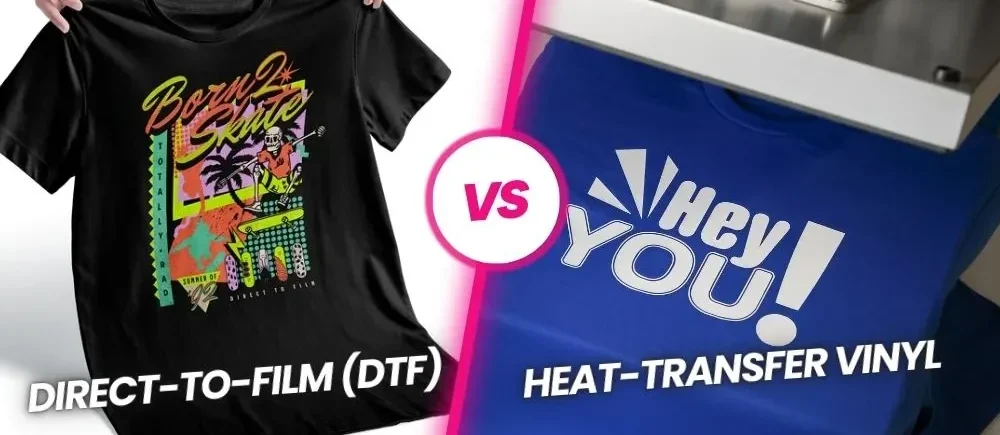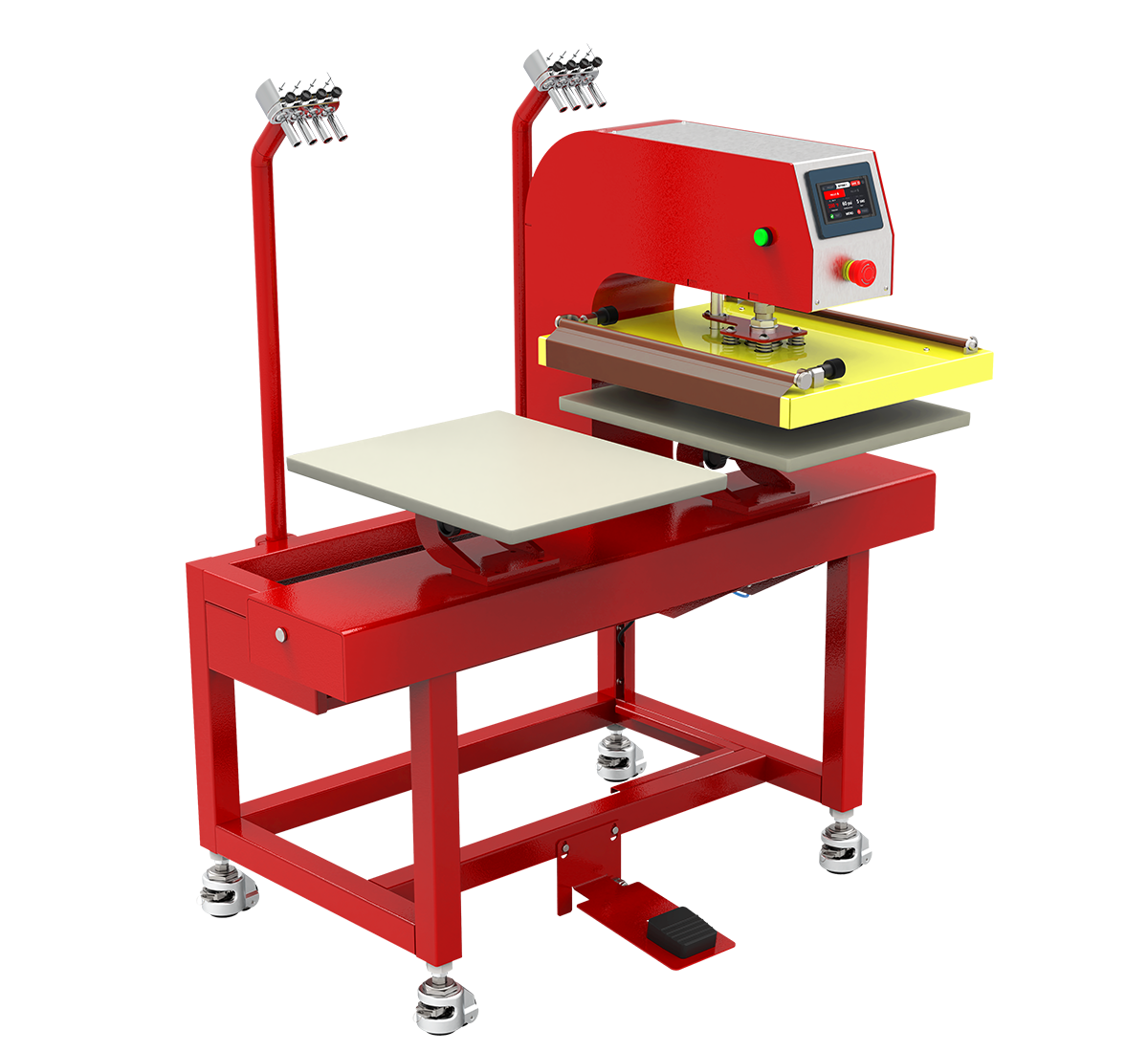

Революция в индустрии трафаретной печати благодаря передовым технологиям и качественному обслуживанию
Anatol Equipment Manufacturing Co.
1429 S Shields Dr
Waukegan, IL 60085


Революция в индустрии трафаретной печати благодаря передовым технологиям и качественному обслуживанию
Anatol Equipment Manufacturing Co.
1429 S Shields Dr
Waukegan, IL 60085

Choosing the right method for custom textile printing is crucial for your project’s success. Your choice impacts the quality, speed, and cost of your prints.
Two popular options in the industry are Direct-to-Film (DTF) and Heat Transfer Vinyl (HTV). Both deliver vibrant, durable designs on apparel and other fabrics, but which method is best for you?
In this article, we’ll compare DTF and HTV, examining their processes, uses, costs, and outcomes. This guide helps small business owners, hobbyists, and pros pick the best printing method that works for them. Explore our textile printing equipment to find tools that suit your needs.
Direct-to-Film (DTF) printing is a modern method for textile printing. It uses inkjet technology to print designs onto a special transfer film. After the film is printed, apply a hot-melt adhesive powder to the film, cure it, and then press it onto fabric using a heat press. DTF delivers versatile, vibrant, and detailed full-color designs.
However, DTF comes with a higher initial investment because of the need for specialized DTF printers, inks, and adhesive powders. The process takes time to learn, and routine upkeep is needed to stop printer clogs and ensure steady quality. Check out our DTF printing guide for tips on getting started.
Heat Transfer Vinyl (HTV) is a reliable method for textile printing. The quick rundown of how to print using HTV is as follows: First, cut your designs from colored vinyl sheets using a vinyl cutter. Next, remove excess material in a process called weeding. Lastly, apply the design to the fabric with a heat press.
HTV is popular for creating simple, bold designs, a favorite among DIY enthusiasts and small-scale printers because of its straightforward process.
On the downside, HTV can be labor-intensive for complex designs because of the weeding process. Also, it is less durable than DTF, with potential cracking or peeling over time, especially on frequently washed items.
To find the best method, let’s look at how DTF and HTV stack up on key factors for printers and businesses.
DTF: Excels at producing intricate, full-color designs with gradients and fine details. The best choice for lifelike images or colorful artwork. The printer prints all colors at the same time on the transfer film.
HTV: Best suited for simple, vector-based designs with solid colors. Multi-color designs require layering different vinyl sheets, which can be time-consuming and less precise for intricate patterns.
DTF: Highly versatile, adhering well to cotton, polyester, blends, synthetics, and even non-fabric materials like leather or wood. It performs consistently across light and dark fabrics with a white ink layer for opacity.
HTV: Works best on cotton, polyester, and cotton-poly blends. Not as versatile as DTF.
DTF: Offers superior durability, with prints that resist cracking, peeling, and fading even after multiple washes. Known to produce long-lasting, wash-resistant prints. DTF is ideal for high-wear items like uniforms or activewear.
HTV: HTV prints are strong for occasional use but may wear out over time. You might notice cracking or peeling, especially on clothes that people wash often.
DTF: Faster for medium to large production runs, as it requires no weeding and can print multiple designs at once. Efficient for businesses handling bulk orders or with frequent high-volume orders.
HTV: Quicker for small, simple projects because of minimal setup. However, weeding and layering make it slower for large orders or intricate designs.
DTF: Higher upfront costs because of specialized equipment (DTF printers, inks, powders, and heat press). However, it becomes cost-effective for larger orders because of faster production and lower labor costs.
HTV: Lower initial investment, with affordable vinyl cutters and heat presses. Ideal for small-scale or hobbyist projects, but can become costly for large runs because of labor-intensive weddings.
DTF: Involves a multi-step process (printing, powdering, curing, and pressing) with a learning curve. Proper printer maintenance is crucial to avoid issues like clogging.
HTV: Simpler and more beginner-friendly, requiring basic design software, a vinyl cutter, and a heat press. Weeding can be tedious but doesn’t require advanced technical skills.
DTF: Produces a soft, flexible print that integrates well with the fabric. However, some prints may feel slightly thicker because of the adhesive layer, though this softens after washing.
HTV: Can feel stiffer or more like a “sticker” on the fabric, especially with thicker vinyl. Specialty finishes like glitter or flock add texture but may not suit all applications.
DTF is the best choice if you:
DTF is great for printing bright, detailed logos on sportswear, custom tote bags, or leather items. Discover our DTF printing solutions to streamline your production.
HTV is the better option if you:
HTV is great for projects like custom t-shirts, team jerseys, or small promotional items.
Learning the DTF process can take time. You’ll also need regular maintenance to avoid printer clogs and ensure steady quality. Some people say that getting good DTF quality needs high-quality supplies and the right technique.
HTV is still a favorite because it is easy to use and has nice textures. However, weeding can be a challenge for detailed designs. Testing both methods on your specific fabrics and designs is crucial to determine what works best for your workflow.
No one-size-fits-all answer exists to the DTF vs. HTV debate. The technique you choose depends on your project goals, budget, and production scale. DTF provides great flexibility, durability, and efficiency for complex designs and larger projects, ideal for businesses aiming to grow, while HTV, with its low cost and simplicity, is perfect for beginners, small batches, or projects needing unique vinyl finishes.
At Anatol, we get how crucial it is to pick the right gear for your printing projects. Whether you are trying DTF or using HTV, our advanced heat presses and printing tools can help you get great results. Ready to elevate your textile printing game? Contact us today to find the perfect equipment for your business!
Your message was successfully sent!